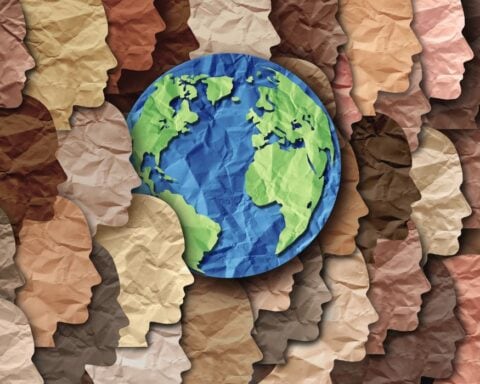Another climate summit has come and gone. The 28th Conference of the Parties of the UN Framework Convention on Climate Change (COP28 to you and me) took stock of the world’s progress in limiting global heating to 1.5°C. This is the guardrail scientists have advised world leaders to make every effort to limit warming to, lest they trigger tipping points that send Earth hurtling into climate breakdown.
So now that the dust has settled, who left Dubai happy and who went home empty-handed? Let’s ask the experts.
First, the winners.
COP28 ended with a historic agreement to “transition away” from using fossil fuels in energy systems, the biggest source of greenhouse gas emissions altering Earth’s climate. So why did the companies plying coal, oil and gas have a good summit?
As we reported last week, the failure to include stronger language in the final text (including the promise of a definitive “phase-out” of fossil fuels) was condemned by climate and energy researchers. “Abated” burning of coal (the dirtiest fossil fuel) is permitted in the text, but with no guidance on how much of the emissions must be captured and stored to be considered abated, COP28 left a loophole wide enough to drive a coal train through.
Natural gas also snuck into the text as a protected “transitional fuel”. Research has indicated that leaks of methane (a potent but short-lived greenhouse gas) from oil and gas infrastructure can actually make natural gas worse for the climate than coal.
A good thing more than 50 oil companies pledged to plug these leaks at COP28 (although the majority of firms haven’t signed). Mark Maslin, Priti Parikh and Simon Chin-Yee, a team of climate experts at UCL, note that gas is a healthier option for home cooking in developing countries than burning wood.
“Nonetheless, there really should be a timeline attached to the use of these transitional fuels,” they say. (Such a phase-out deadline was deemed “too controversial” to even discuss.)
An agreement referencing fossil fuels – between nearly 200 countries and brokered by a petrostate – is still startling says Matt McDonald, an associate professor of international relations at The University of Queensland. An acknowledgement that these fuels must be eliminated has eluded negotiators for three decades, he says.
Perhaps the severity of the climate crisis is starting to sink in.
“In 2023, temperatures are already spiking past the crucial threshold of 1.5°C,” McDonald says. “The global stocktake of emissions cuts released in advance of the talks shows our current efforts are not enough to stop further warming.”
Critically, this agreement is non-binding and will not limit the search for, extraction and burning of fossil fuels, as McDonald highlights:
“Countries such as Australia advocated stronger language on ending fossil fuels while maintaining a steady pipeline of new fossil fuel projects at home.”
Who suffers from this arrangement? The Australian public for a start, according to Fergus Green, a lecturer in political theory and public policy at UCL.
“The foreign-owned corporations that produce most of our coal and gas pay little tax and employ relatively few people, while capturing billions of dollars in state and federal government subsidies,” he says.
“Scaling up as a clean energy superpower could bring more economic growth, jobs and tax revenue than would be lost from fossil fuels – especially if we taxed the fossil fuel industry properly on its way out.”
Small islands
Now let’s hear from the other losers.
COP28 seemed to start well. On the first day, delegates agreed a loss and damage fund to compensate developing countries for the consequences of climate change – lost livelihoods, collapsed ecosystems, drowned homes – they cannot adapt to.
How the fund will work is unclear but present arrangements privilege donors (developed countries) over recipients.
Wealthy nations that have emitted the most and are responsible for much of the problem have pledged US$700 million (£550 million) so far. Compare that with the actual annual cost of climate-related loss and damage in developing countries, which is estimated to be somewhere between US$100 billion and US$580 billion.
Compare that with how much the UAE hosts spent on building COP28’s venue (US$7 billion), say Maslin, Parikh and Chin-Yee.
The overdue bill will lengthen as long as fossil fuels are dug up and burned. And it’s the world’s small islands where the greatest costs will be borne.
“Scientific evidence is clear,” says Alana Malinde S.N. Lancaster, head of the Caribbean Environmental Law Unit at the University of the West Indies in Barbados. “Rapidly eliminating coal, oil and gas is necessary to limit global warming to 1.5°C, as enshrined in the Paris agreement. Even at this limit, many small islands will face a drastic increase in coastal flooding from sea-level rise, and other effects which could render these countries uninhabitable.”
At the Dubai talks, delegates belonging to the Alliance of Small Island States (Aosis) said that without an immediate fossil fuel phase-out, the final text was “a death certificate” and the product of a process that “has failed us”.
Aosis had also hoped for an agreement to double funding to help developing countries adapt to climate change, Lancaster says.
“The agreement on adaptation in Dubai talks generally of the need for more finance, but makes few commitments,” says Susannah Fisher, a principal research fellow in geography at UCL. That conversation will have to be renewed next year, she adds, at COP29 in Azerbaijan.
Meanwhile, the world is adapting to a harsher climate much too slowly – and unevenly.
“Between 3.3 and 3.6 billion people live in places that are expected to be highly vulnerable to climate change,” Fisher says. “In Africa, tens of thousands of people will die from extreme heat unless radical measures are taken to adapt. Between 800 million and 3 billion people will not have enough water at 2°C global warming – and up to 4 billion at 4°C. We also have very little evidence that funded adaptation measures are working.”
Food producers
COP28 was applauded for finally talking about food.
How the world produces food, how it gets it to people and how it’s disposed of (or wasted) accounts for one-third of greenhouse gas emissions. Roughly 80% of food production is powered by fossil fuels and agriculture is the leading cause of biodiversity loss. This was the first climate summit to get more than 130 countries to acknowledge that agriculture must “urgently adapt and transform”.
More than 200 African academics and civil society leaders are worried about what that transformation might entail.
“The call was for COP28 leaders to commit to separating food systems from the fossil fuels, antibiotics, preservatives, pesticides, herbicides and artificial fertilisers they are currently centred on,” says Florian Kroll, a PhD candidate in agrarian studies at the University of the Western Cape.
Kroll says COP28 did not debate how to curb the powerful monopolies keeping agriculture hooked on these fuels and chemicals. Without structural reforms to conventional agriculture, expanding its prevalence in Africa will only accelerate environmental destruction, he says.
The COP28 food statement also calls for partnerships between states and corporations to solve agriculture’s climate footprint. “This is especially problematic,” Kroll says. “Public-private partnerships allow corporations to influence government policy to their benefit, at the expense of local industries, the poor and the unemployed.”
In the food reforms envisaged at COP28, the World Trade Organisation would remain at the “core” of food distribution. This poses another big problem for traditional farmers, Kroll says:
“[The World Trade Organisation] pushes developing countries to extract finite mineral resources and grow export crops for global trade. Cheap imports undermine local industry and livelihoods.”
“Governments should instead promote local food production with short value chains and strengthen fair trade between African countries,” he adds.
Wildlife and ecosystems
Just last year, the world was celebrating a landmark deal to protect 30% of Earth’s land and sea for the benefit of biodiversity by 2030.
Even with all that space, species will have nowhere to hide from rising temperatures says Alex Pigot, a principal research fellow at UCL’s Centre for Biodiversity and Environment Research.
“Our world has warmed by roughly 1.2°C since the pre-industrial period,” he says.
“Biodiversity is feeling the heat in all ecosystems and regions, from mountain tops to ocean depths.”
Tropical coral reefs once bleached rarely, Pigot says. Now, this vivid display of poor health and stress happens almost annually. Here the world has a preview of the devastation that is still in store for other ecosystems – and ultimately, us.
“If all national plans to cut emissions are fulfilled, the world would still be on track for 2.5°C-2.9°C of global warming by the end of the century,” Pigot says.
“As the thermal thresholds of more and more species are crossed, the capacity for ecosystems to adapt – as well as the societies that depend on them – will diminish.”
Jack Marley is environment + energy editor, UK edition, at The Conversation.
This story first appeared in The Conversation. Read the original story here.





